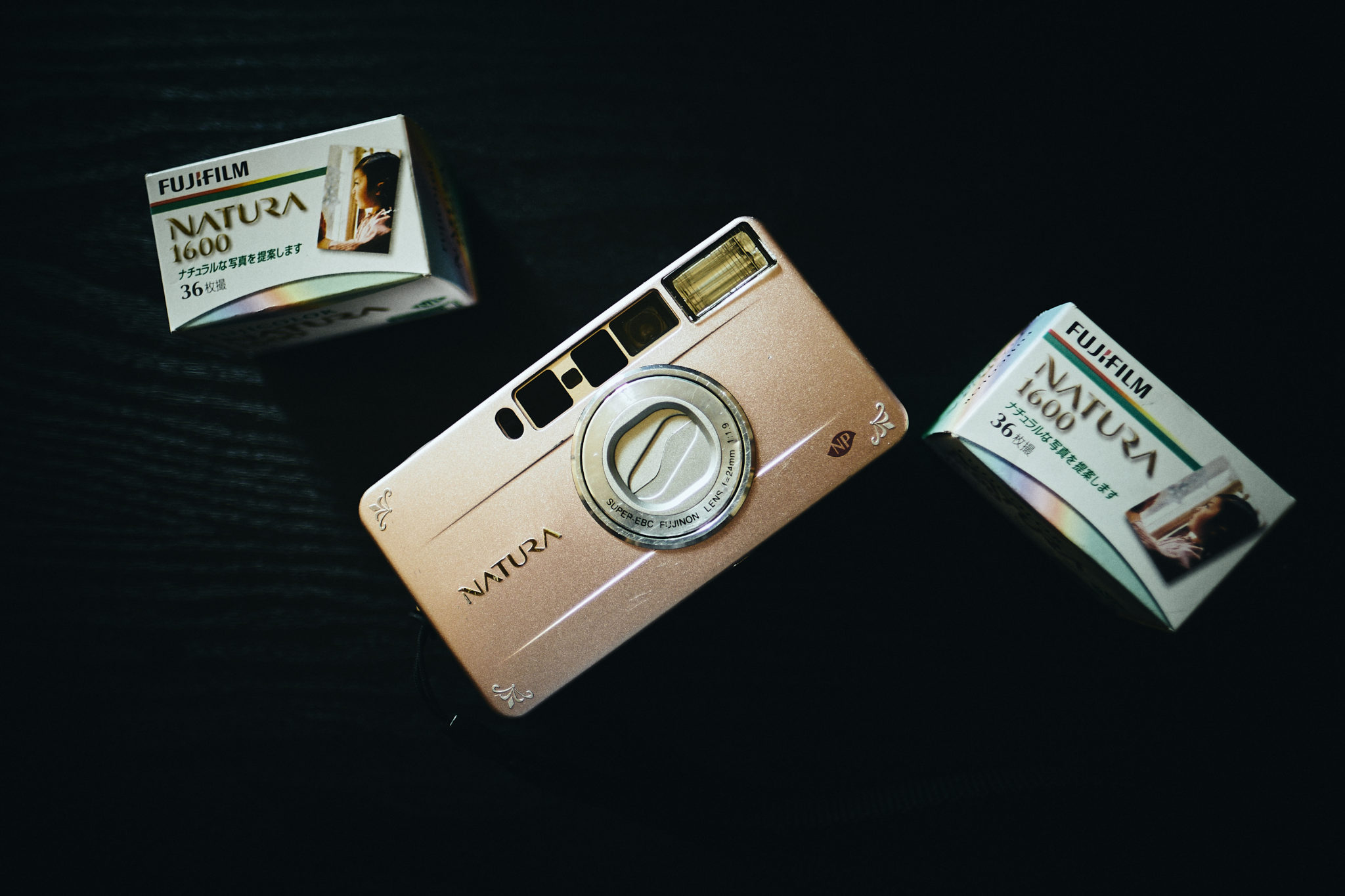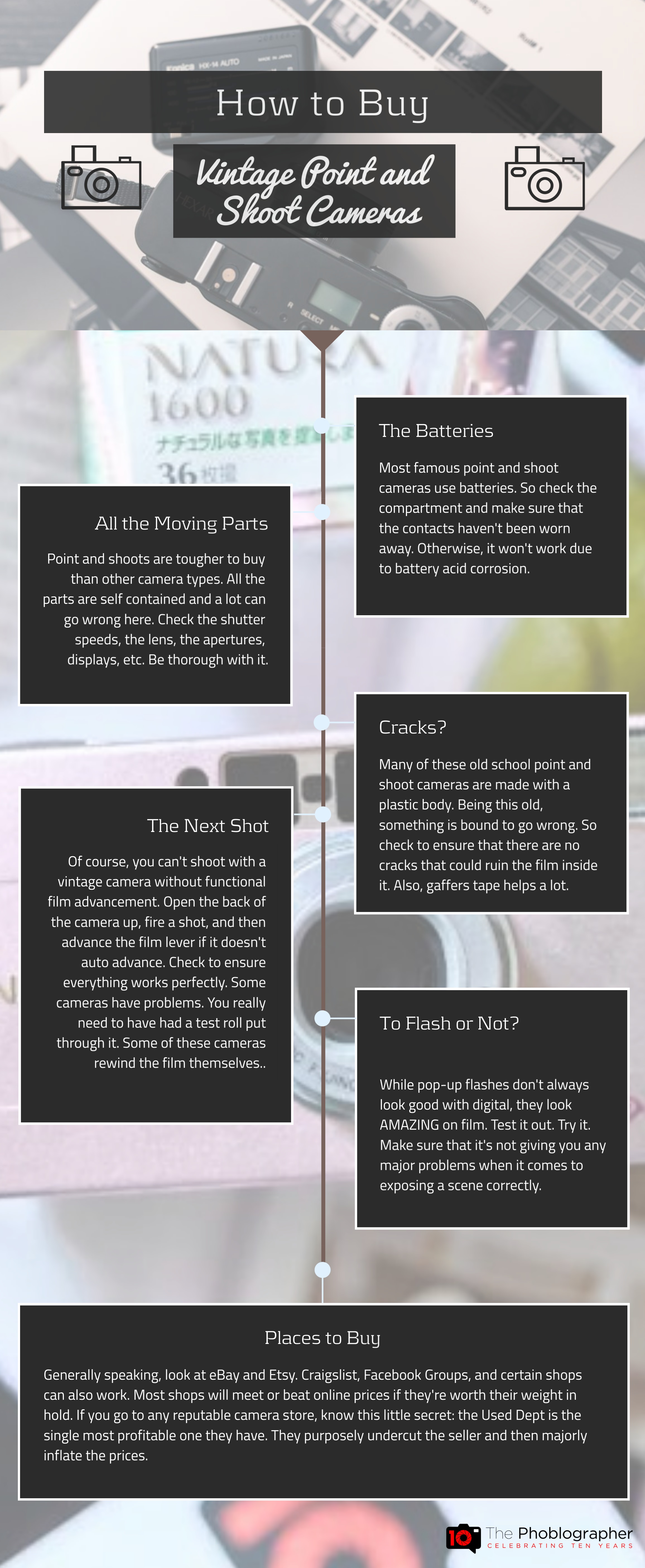If you’re in the market for a vintage point and shoot, our latest original infographic covers everything you need to know before taking the plunge.
Vintage point and shoot cameras are some of the most fun to shoot with. They are great entry points for photographers interested in shooting film who find more traditional vintage cameras to be intimidating. As their name suggests, simply point your camera at your subject and shoot away. You won’t have to worry about messing around with camera settings. If you’re looking to purchase a vintage point and shoot camera of your very own, here are all the things that you should be mindful of.
The Batteries
Most famous vintage point and shoot cameras have electronics built-in and require batteries to operate. Before spending your hard earned money on a vintage point and shoot camera, ensure that the battery compartment is free from corrosion. If dead batteries were left inside the compartment, the lead acid within the batteries will leak out over time. Battery acid has a nasty habit of corroding battery terminals. While it’s sometimes possible to clean the corroded terminals, save yourself the headache and go for vintage point and shoot cameras that are corrosion-free.
All the Moving Parts
Point and shoot cameras are often self contained. Unlike other types of cameras, their internal components are often tucked away and challenging to inspect. It can be hard to tell if something is broken or not, so you’ll want to be extra thorough when inspecting a vintage point and shoot. Is the lens focusing correctly? Are you able to adjust the aperture? Do all the shutter speeds work? If there are LCD screens, are all of them working and displaying the correct information? Be sure to dot all the I’s and cross all the T’s and give everything a once-over.
Cracks?
Aside from a few exceptions, many vintage point and shoot cameras have plastic bodies. Depending on the age of the camera, the plastic used can sometimes become brittle and prone to cracking. Make sure there are no cracks around the plastic housing as they can lead to light leaks and other issues. Gaffer’s tape can be used to hold things together in a pinch.
The Next Shot
Vintage point and shoot cameras are pretty easy to use for the most part. While some of them will automatically advance the film after each shot, that’s not always the case. A camera won’t do much good if it’s got a broken film advance. If possible, open the back of the camera and fire a shot to see if it will advance to the next frame automatically. Some vintage point and shoots will require you to manually advance to the next frame. Either way, ensure that the film advance is functional. Some point and shoots even have the ability to automatically rewind a roll of film after you’ve finished shooting every frame. Ideally, you’ll want to shoot a test roll of film through the vintage point and shoot you want to ensure that everything works flawlessly.
To Flash or Not?
With digital, using a pop-up flash often leads to unflattering results. With film, however, illuminating your subject using your point and shoot’s pop-up flash can look quite pleasing. You’ll want to ensure that your vintage point and shoot can meter and expose a scene properly when using the built-in pop-up flash. Don’t be afraid to give it a try and see what results you achieve.
Places to Buy
There are plenty of reputable sellers on eBay and Etsy that specialize in vintage cameras, just be sure to check their reviews. Alternatively, you can also find vintage cameras listed on Craigslist and in Facebook Groups by private sellers as well. The drawback is that vetting these private sellers can sometimes be challenging. Consider checking out the used department at reputable camera stores as well. This requires doing some leg work, but some camera stores will actually meet or beat prices that you can find online. One thing of note is that the used department at most major camera stores tend to be their most profitable. It’s common practice for them to buy vintage cameras from private sellers at undervalued prices and then resell them at higher price points.



